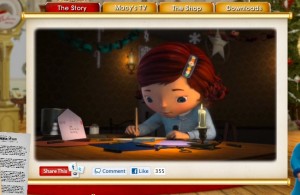
It’s not a sprint, it’s a marathon.
One essential difference between content marketing and episodic, campaign based advertising is the former is a continuum. It has a beginning and a middle, but the end should ideally recede somewhere over the horizon.
It’s therefore essential to plan for continuity in content marketing. Without a story, characters, a theme or a hook that has legs over time, the well will run dry awfully fast and marketers will find themselves staring at the proverbial blank page, puzzling over how to fill it.
What strategies and tactics can marketers adopt to ensure longevity? There are several, and they fall into fairly neat categories. The following is by no means a comprehensive list, but instead aimed a getting you thinking about the themes that make content sustainable.
Character: Marketing is rife with mascots, from sock puppets to Mr. Clean, from Mr. Whipple to Madge the Manicurist (“You’re soaking in it.”). A strong character drives narrative. JWT’s “Believe” campaign for Macy’s is centered around a fictionalized version of Virginia O’Hanlon, the real-life girl who wrote the letter resulting in the famous editorial “Yes, Virginia, there is a Santa Claus.”
Virginia (pictured above) appears in animations on the store’s website, as an augmented reality character in certain points of the store itself, and even stars in an animated television special. There are supporting characters in her story, and licensing agreements are underway for a line of dolls and toys.
Yes, Virginia, characters can be a content marketing tent pole.
Curation: Just as Virginia existed in real-life, so does a lot of useful content in the wild. No matter your product, service or industry, there’s lenty of content about it out there already, and likely more every day: news, trade publications, conferences, blogs, online videos, interviews and much more – more than your target audience is likely willing to wade through without guidance.
That’s where content curation comes in. Rather than reinvent the wheel, curation is a continual approach to judiciously finding and presenting relevant, topical and current content on a given topic, industry or area. It’s a common tactic. Nearly half of marketing executives (48%) are using content curation according to a 2011 survey from HiveFire.
People inherently rely on trusted sources: friends, family, brands, companies, experts, you-name-it, to help keep them informed, educated and even amused. Just as you probably have one go-to friend for car advice, another who can tell you what new books or films are worth seeing, or another who’s got the lowdown on the latest places to eat, business are collecting, organizing and filtering content around their own fields of expertise.
Community: Build it and they will come – and create content for you. OK, maybe it’s not that simple, but plenty of companies have benefited tremendously from creating communities in which consumers can gather to discuss given topics. This holds particularly true in the tech sector, where brands such as Apple, Microsoft, IBM and any number of major electronics manufacturers run forums in which members can discuss business problems and product issues, offering one another help and support.
The benefits go far beyond ongoing content creation. By listening and participating in discussions, the sponsoring brand has an early-warning system regarding problems, issues and often, competition in the field. Monitoring discussions can lead to advances in product development, and customer service expenditures can be dramatically reduced when customers are empowered to help one another.
 Rubrics: News isn’t predictable, but newspapers are (magazines, too). Pick a periodical, any periodical, and you’ll find a wealth of regularly scheduled features and columns: the editorial page, a daily horoscope, or a weekend “What’s On” section. Wednesdays may be devoted to cooking and recipes, Thursdays to cars, or home design, or science. These regular features anchor the publication. They give readers something to look forward to (and return to).
Rubrics: News isn’t predictable, but newspapers are (magazines, too). Pick a periodical, any periodical, and you’ll find a wealth of regularly scheduled features and columns: the editorial page, a daily horoscope, or a weekend “What’s On” section. Wednesdays may be devoted to cooking and recipes, Thursdays to cars, or home design, or science. These regular features anchor the publication. They give readers something to look forward to (and return to).
Content marketing can work on the same principle. Develop regular, repeatable content units: an events calendar, expert opinion columns, how-tos, a video of the week. Make it original, repeatable, and schedule it to appear regularly. Rather than re-invent the wheel, these editorial calendar foundations drive their own momentum while providing the audience with both new material and a reassuring sense of familiarity.
The above is only the beginning of ways you can play content forward. We haven’t even begun to discuss user-generated content (hey, why should you do all the work!), or ongoing initiatives in how-to, utility or educational content.
But by now, you should get the idea: sustainability. It sure beats looking at a blank page and wondering how to fill it, day in and day out.
